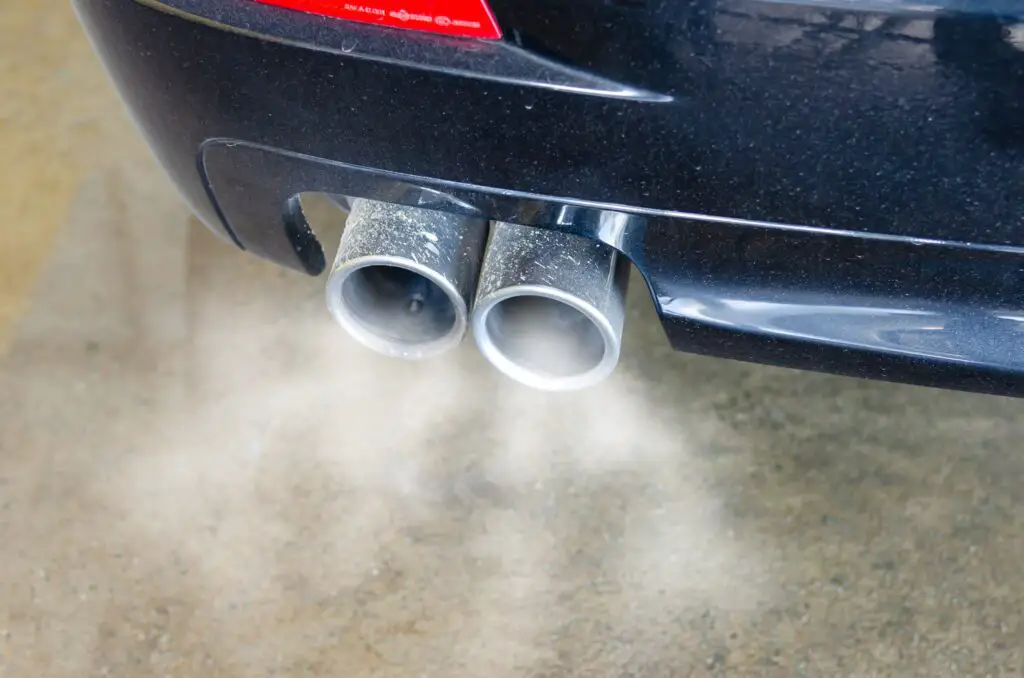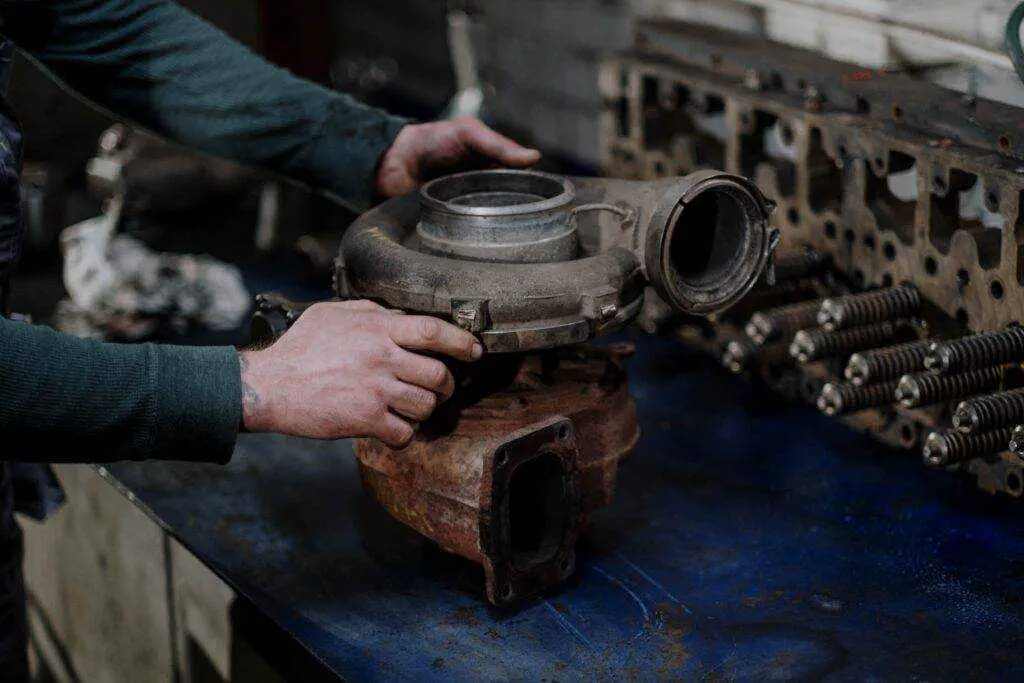That glug glug sound as you tip the oil bottle yet again doesn’t mean more lubrication – it spells trouble. Too much oil can do extensive damage. This article covers What Happens if You Put Too Much Oil in the Engine, how overfilling impacts engines, symptoms to watch for, how to check for excess oil and key steps to get levels right again.
We all make mistakes, even with good intentions like trying to keep our engines well-oiled. But in reality, overfilling the oil invites cascading problems. Here’s how to avoid mucking up your engine with too much of what lubricates it best – when used properly.
Understanding Proper Oil Levels
To grasp overfill effects, first, let’s review ideal oil function and levels:

Oil Purpose
- Provides lubrication to prevent metal-on-metal friction
- Cools critical components like bearings
- Forms protective coatings on surfaces
Ideal Fill Range
- Engines need sufficient oil to operate reliably, but excess is detrimental.
- The proper full mark on the dipstick indicates maximum safe volume.
So unlike coolant, more oil does not equate to more performance. You want just enough – and not a drop extra. Now let’s see what happens when we tip the scales.
How Too Much Oil Affects Engine Components
That sloshing sound hints at the damage being done by excess oil:
Oil Foaming
Churning crankshafts whip extra oil into aeration like beaten eggs, reducing lubrication quality and promoting oxidation.
Combustion Chamber Deposits
More oil seeping past pistons burns and leaves carbon buildup on valves, spark plugs, and catalytic converters.
Premature Wear
Thinned oil films on bearings and cams lead to excess corrosion compared to thicker oil films within the normal range.
So in summary, overfilled engines self-sabotage through subdivision, contamination, and inefficient lubrication. Don’t invite damage – stay inside oil fill lines.
Signs Your Engine May Have Too Much Oil
Look for these possible symptoms of an over-filled engine:
Visible Leaking
Excess volume strains seals and gaskets, leading to external oil leaks at joints.
Clouds of Blue Smoke
More oil burning in the chambers produces emissions clouds under acceleration from the tailpipe.


Reduced Performance
Piston ring fouling plus increased rotating and reciprocating drag saps power.
High Operating Temps
Ineffective aerated oil leads to elevated engine temperature readings.
So be alert for these red flags if you suspect an overfill mishap. Catching it quickly minimizes the damage.
Can Overfilling Damage an Engine Immediately?
What Happens if You Put Too Much Oil in the Engine? The risks and severity depend on how much excess oil enters the engine:
Slightly Over Full Line
Even half a quart over risks some mechanical issues but is less immediately catastrophic.
Severely Overfilled into Valve Covers
Filling oil galleries hydraulically locks the engine and can bend connecting rods from fluid compression.
So while even slightly over the line demands prompt extraction, severe overfills require immediate mechanical intervention to prevent engine destruction. Don’t gamble with over-guesstimating oil needs.
How to Diagnose an Engine Overfill Properly
Accurately identifying excess oil requires methodical dipstick checking:
- Ensure the engine is fully off, level, and cooled down during oil level inspection.
- Wipe the dipstick to clean off any residue from previous pulls when reinserting for each new measurement.
- Remove, reinsert fully, then pull again to verify consistent indication between checks.
- Note oil topped off versus drained out to calculate if capacity appears exceeded.
Getting the true full picture means taking oil-level checks step-by-step. Never glance and guess – a precise dipstick procedure prevents problems.
Safely Draining Excess Oil to Proper Levels
If overfilled, drain down the oil carefully:
- With the engine fully cooled, remove the drain plug slowly to avoid burns.
- Drain oil in small increments only, frequently rechecking the dipstick.
- Stop draining immediately once the dipstick indicates back within a safe range.
- Absorbent pads soaked in degreaser help extract overfilled oil without draining.
- Use a pump-type fluid evacuator in extremely overfilled situations to avoid spills.
- Replace the drain plug with a fresh crush washer once finished draining, and torquing to spec.0
Correct carefully – don’t overcompensate and drain out too much! Incremental extraction is key.
Related Repairs Oil Overfills Can Necessitate
What Happens if You Put Too Much Oil in the Engine? Excess oil invades places it doesn’t belong, necessitating additional repairs like:
Cleaning Carbon Deposits
Overfilled engines require top engine cleaning to remove combustion chamber carbon accumulation left by burned oil.
Replacing Spark Plugs
Fouled, oily plugs won’t fire properly. They need replacement after verifying that the oil levels are corrected.
Fuel Injector Cleaning
Injector tips clogged by contamination caused by excess oil burning require professional fuel system cleaning.
So don’t view an overfill as a quick fix once drained – hidden damage may still linger internally.
Trust the Experts for Severe Overfill Fixes
Seeking professional help makes sense if you want to know What Happens if You Put Too Much Oil in the Engine:
- Draining appears insufficient to restore safe oil capacity.
- Bearing clearance measurements indicate hydraulic lock damage.
- Performance problems persist indicating fouled components.
For severe overfills or uncertainty, the pros can diagnose issues and take proper corrective action. Don’t keep driving and risking elevated damage.
Remember – Not a Drop Over When Topping Off
A common motto is “more is better” but for engine oil, not a chance. Excessive volumes risk serious mechanical consequences. Measure carefully, don’t overpour, and resolve overfills completely. With oil inside proper levels, your engine stays happily lubricated instead of drowning. So be attentive to fill-ups – don’t float good oil habits. For more briefing about What Happens if You Put Too Much Oil in Engine check out this article What happens if I put too much oil in my car?
Frequently Asked Questions
What are the symptoms of overfilled engine oil?
Symptoms of overfilled oil include leaks from seals and gaskets, reduced engine power, increased operating temperature, oil foaming, excess oil consumption, and blue smoke from the tailpipe.
Can overfilling oil cause overheating?
Yes, overfilled oil can lead to elevated engine temperatures from reduced oil circulation, oil pump cavitation from air ingestion, excess friction from oil chain aeration, and reduced lubrication film thickness.
Will an extra quart of oil hurt my engine?
One extra quart over the full mark risks some mechanical issues from foaming, fouling, and increased corrosion but is less immediately damaging than a severe overfill. But it’s still recommended to drain any excess.
Can too much oil cause turbo failure?
Yes, overfilled oil strains the turbocharger bearings decreasing their lifespan. Aerated, foamy oil provides inadequate turbo-bearing lubrication, which can lead to premature turbo failure.
Is it OK to drive with overfilled oil?
It’s never recommended to drive with significantly overfilled oil. Even slightly over can cause mechanical damage over time. Safely drain down to the proper level as soon as overfilling is discovered.
Will overfilling oil cause smoke?
Too much oil getting past the pistons and rings will burn in the combustion chambers, leading to increased exhaust smoke, especially under acceleration. It also causes spark plug fouling.
How long can I run my car with too much oil?
It’s never recommended to continue driving once significantly over the full oil level mark. Even brief operation risks damage. Safely pull off and drain the excess oil immediately.





